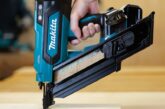
In the next part of our Build it Better series with Catnic, Richard Price, Technical Director, explains the role of truly thermally broken lintels in improved energy performance. Plus, a chance to win a bundle of quality Catnic branded workwear and merchandise.
Successive revisions to Part L of the Building Regulations, the most recent in 2021, have tightened the energy efficiency standards for new homes; minimising the amount of energy required to heat homes, lowering the overall carbon impact and reducing the fuel costs for residents.
The next step in this process will be the Future Homes Standard, due to be introduced this year. This will include a further revision to Part L with the objective of ensuring that new homes will produce at least 75 percent less carbon than those built to Part L 2016 standards. The Future Homes Standard also seeks to ensure new homes are zero carbon ready, meaning they will require no further upgrades to achieve net zero as the electricity grid is decarbonised.
An important part of this is ensuring the fabric of the property meets the highest levels of energy efficiency. The 2021 revision to Part L introduced new standards that significantly increased the efficiency requirements for key elements of the building fabric including the walls, roofs, floors, windows and doors. The Future Homes Standard consultation documents indicates that these enhanced U-values will form the basis of the new requirements alongside lower carbon heating, improved airtightness and the recently announced mandatory solar PV. However, it is possible that the final version will see the fabric standards tightened further.
Complying with these requirements and creating a zero-carbon ready new build will rely on homebuilders taking a whole building approach to the energy performance. As a significant potential source of heat loss, a simple and cost-effective way of improving energy efficiency is to utilise truly thermally broken lintels, as heat losses at junctions can account for around 30 percent of the total for a building.
Formed from one piece of folded steel and spanning the insulated cavity, traditional cavity wall lintels can create a significant thermal bridge between the inner and outer leaf of a wall, contributing to heat loss. In contrast. thermally broken lintels (TBL) are manufactured from two separate pieces of steel with an insulated core, eliminating the thermal bridge.

Depending on the specific design of the lintel, separating the inner and outer steel sections can reduce heat loss through the lintel by over 90 percent.
The thermal performance of a lintel is shown by its psi value and is measured in Watts per metre Kelvin (W/mK). This is the additional energy loss through the linear thermal bridge between two adjoining plane elements. The thermal performance of plane elements are shown by their U values and are measured in Watts per metre squared Kelvin (W/m2K).
When is a TBL not a TBL?
When considering a TBL, it’s worth recognising that in reality, not all products that claim to be thermally broken provide a true thermal break, due to the way they are constructed.

For example, some include steel brackets riveted to the inner and outer sections, or fasteners that bolt the inner and outer leaf together. These connecting elements still allow heat to be transferred between the inner and outer leaf and therefore compromise the energy efficiency of the property. Conversely, true thermally broken lintels will have no connection between the two sections that can conduct heat. The Catnic thermally broken lintel for example, is manufactured from two folded steel sections bonded to a high-strength, thermally efficient insulating core. This design achieves psi values of between 0.02 and 0.05 W/mK, confirmed by the Building Research Establishment.
When evaluating thermally broken lintels, it is therefore crucial to consider the presence of any discrete brackets or fixings that could compromise their thermal efficiency.
Competition time – Wear it Better

Each month we are giving you the chance to win a bundle of quality Catnic branded workwear and merchandise. This includes TuffStuff Elite Work Trousers, Elite body warmer and Snape Jacket as well as a Catnic Build it Better hoodie, baseball cap, beanie and golf umbrella. Ten runners up will win a Catnic hoodie.
To be in with a chance of winning, simply answer the following question:
To find out more about Catnic’s thermally broken lintels, visit www.catnic.com.







